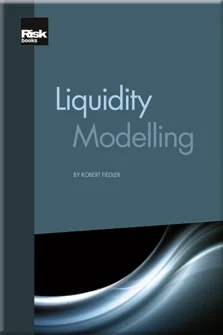What Is Liquidity Risk?
What Is Liquidity Risk?
Introduction to 'Liquidity Modelling'
Setting the Scene: Why Liquidity Is Important in a Bank
What Is Liquidity Risk?
Illiquidity Risk: The Foundations of Modelling
Capturing Uncertainties
A Template for an Illiquidity Risk Solution
The Counterbalancing Capacity
Intra-Day Liquidity Risk
Liquidity Transfer Pricing and Limits
The Basel III Banking Regulation
We have already intuitively used the expression “liquidity risk” but not yet properly explained what we mean by it. We have considered market and credit risk, which result in a loss or a profit and do not have a time structure (or at least the current measurement methods bypass this by working with present values). Obviously, liquidity risk has some similarity to these value risks (it can, for example, result in comparative funding losses) but some if its perils go beyond just losing money. We will distinguish in this chapter between liquidity risks that are value risks and those which cannot be expressed simply as expected profits or losses.
The difference is important, not only because liquidity does not fit into value risk measures such as VaR, but, more importantly, because it cannot be held against capital as a buffer.
As a starting point, we examine concepts like illiquidity, insolvency and default and establish a common usage of these throughout this book. Advancing this we describe liquidity/illiquidity for financial instruments and markets as well as financial institutions (banks). Finally, we outline liquidity-induced value risks.
Illiquidity
A bank enters into
Copyright Infopro Digital Limited. All rights reserved.
As outlined in our terms and conditions, https://www.infopro-digital.com/terms-and-conditions/subscriptions/ (point 2.4), printing is limited to a single copy.
If you would like to purchase additional rights please email info@risk.net
Copyright Infopro Digital Limited. All rights reserved.
You may share this content using our article tools. As outlined in our terms and conditions, https://www.infopro-digital.com/terms-and-conditions/subscriptions/ (clause 2.4), an Authorised User may only make one copy of the materials for their own personal use. You must also comply with the restrictions in clause 2.5.
If you would like to purchase additional rights please email info@risk.net











